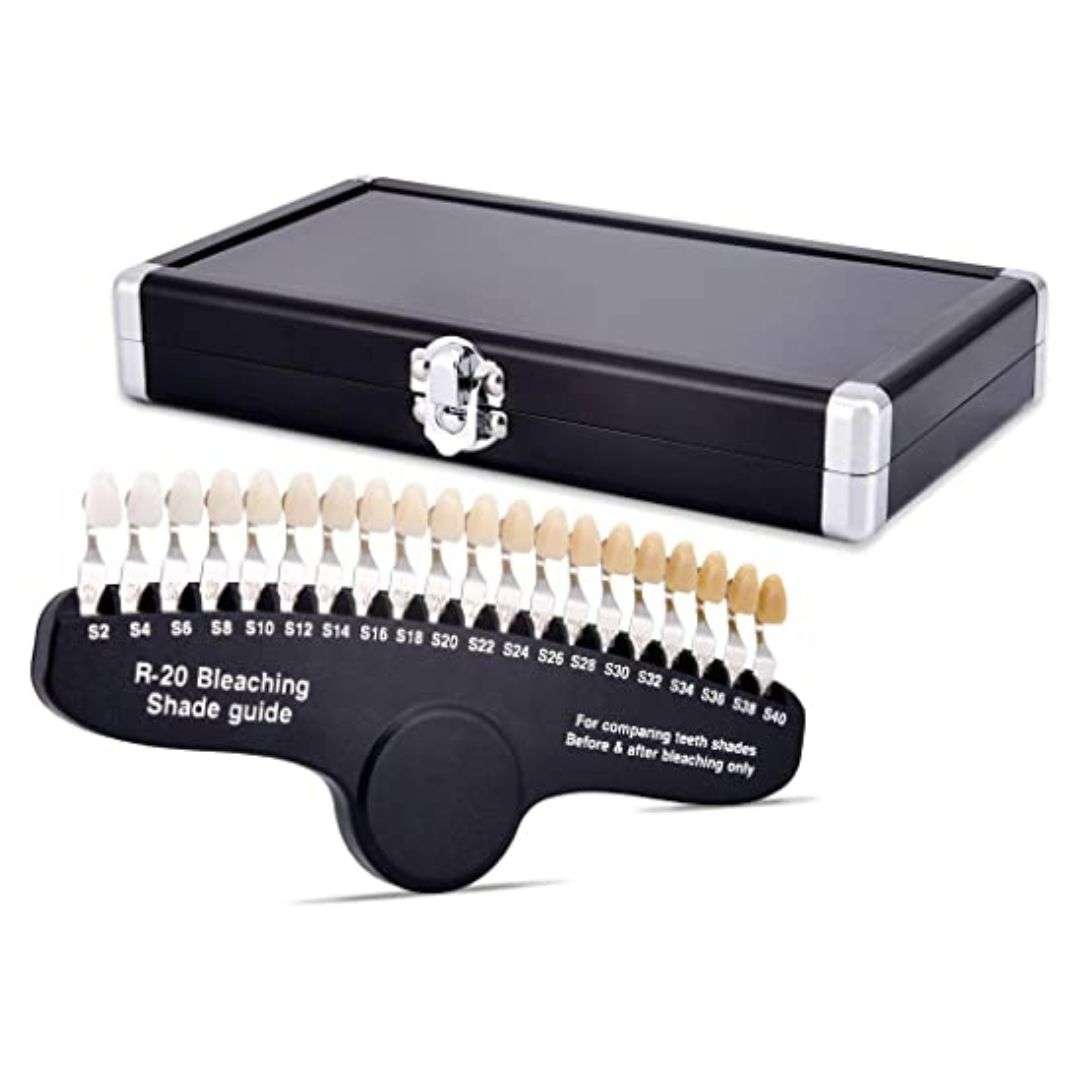What Is Teeth Whitening Shade? Find Your Ideal Smile

Teeth whitening shade is a term used to describe the level of brightness and color achieved through teeth whitening procedures. It’s a measure of how white and radiant your smile appears after undergoing a whitening treatment. The goal of teeth whitening is not only to remove stains and discoloration but also to achieve a shade that complements your skin tone, hair color, and overall aesthetic preferences.
The most commonly used teeth whitening shade guide is the Vita Shade Guide, which categorizes teeth into four main shade groups: A, B, C, and D. Each group has its own set of sub-shades, ranging from very light to very dark.
- A Shades: These are the most common shades and range from A1 (very light) to A4 (light).
- B Shades: These shades are less common and range from B1 (light) to B4 (medium).
- C Shades: These shades are darker and range from C1 (medium) to C4 (dark).
- D Shades: These shades are the rarest and range from D1 (dark) to D4 (very dark).
When it comes to teeth whitening, the desired shade is often a matter of personal preference. Some people may prefer a more natural look, while others may desire a brighter, more dramatic smile. The American Dental Association (ADA) recommends that teeth whitening treatments should aim to achieve a shade that is no more than two shades lighter than the patient’s natural tooth color.
However, the art of achieving the perfect smile goes beyond just whitening. It involves considering the entire facial structure, skin tone, and hair color. For instance, people with cooler skin tones (pale with pink undertones) may find that teeth that are too white can create an unnatural contrast. On the other hand, those with warmer skin tones (olive or golden) can often pull off brighter, whiter teeth.
To find your ideal smile, consider the following steps:
Consult a Professional: Start by consulting a dentist or a teeth whitening specialist. They can assess your teeth and recommend the most suitable whitening treatment based on your dental health, the level of staining, and your desired outcome.
Use Shade Guides: Look at teeth whitening shade guides together with your dentist. These guides will help you visualize how different shades might look on you.
Consider Your Skin Tone and Hair Color: Think about how your skin tone and hair color might influence your choice of shade. For example, if you have a cool skin tone, you might prefer a slightly less white shade to avoid an unnatural look.
Look at Before-and-After Photos: Many dentists and teeth whitening clinics have before-and-after photos of previous patients. Looking at these can give you an idea of what different shades might look like in real life.
Trial with Temporary Solutions: Some dentists offer trial whitening trays or strips that can give you a temporary preview of what your teeth might look like at different shades. This can be a useful step before committing to a specific shade.
Achieving your ideal smile through teeth whitening is a process that requires patience, understanding of what is possible, and a clear communication with your dental professional. It’s not just about achieving a certain shade but ensuring that the shade you choose complements your overall appearance and makes you feel confident and happy with your smile.
How do I choose the right teeth whitening shade for my skin tone?
+Choosing the right teeth whitening shade for your skin tone involves considering whether you have a cool, warm, or neutral skin tone. Cool skin tones look best with slightly less white teeth to avoid an unnatural contrast, while warm skin tones can pull off brighter teeth. Neutral skin tones are versatile and can work with a variety of shades. It's best to consult with a dentist who can provide personalized advice based on your unique complexion and preferences.
What is the Vita Shade Guide, and how is it used in teeth whitening?
+The Vita Shade Guide is a widely used tool in dentistry to classify the color of teeth. It categorizes teeth into four main groups (A, B, C, D) with sub-shades within each group, ranging from very light to very dark. Dentists use this guide to assess the current shade of a patient's teeth and to determine the most appropriate shade for teeth whitening treatments, ensuring that the outcome is both aesthetically pleasing and natural-looking.
How long does teeth whitening typically last, and what factors affect its longevity?
+The longevity of teeth whitening results can vary significantly from person to person, typically lasting anywhere from a few months to three years. Factors that affect how long your teeth stay white include your oral hygiene habits, diet (consumption of staining foods and drinks), smoking, and the presence of any dental work such as fillings or crowns. Regular dental cleanings and touch-up treatments can help maintain the whiteness of your teeth over time.
In conclusion, finding your ideal teeth whitening shade is a personalized process that requires careful consideration of your natural tooth color, skin tone, hair color, and personal preferences. By working closely with a dental professional and considering the factors mentioned above, you can achieve a smile that not only looks great but also feels like the best version of yourself. Remember, the goal of teeth whitening is not just to achieve a certain shade but to enhance your overall smile and confidence.
